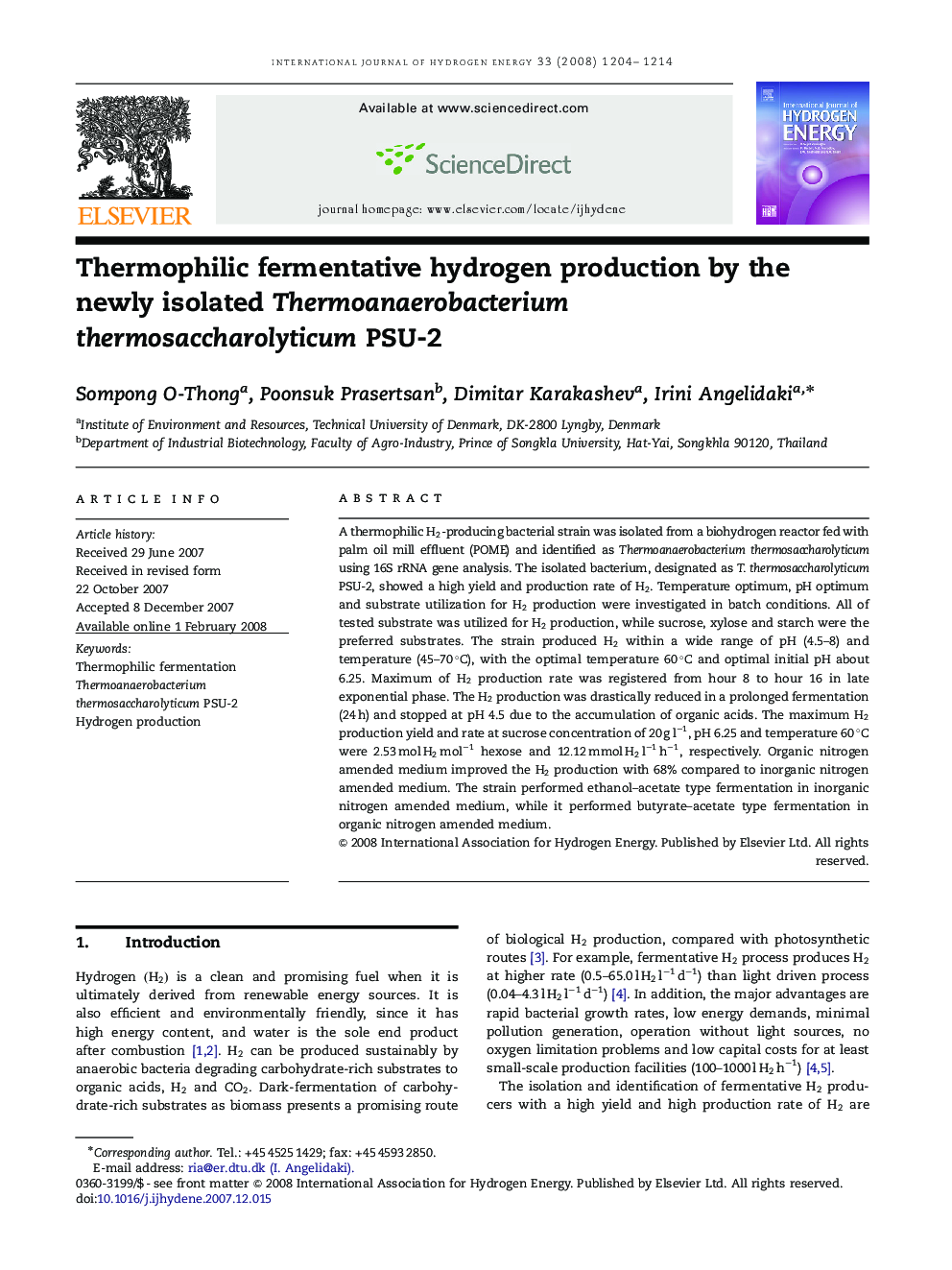| Article ID | Journal | Published Year | Pages | File Type |
|---|---|---|---|---|
| 1274694 | International Journal of Hydrogen Energy | 2008 | 11 Pages |
A thermophilic H2H2-producing bacterial strain was isolated from a biohydrogen reactor fed with palm oil mill effluent (POME) and identified as Thermoanaerobacterium thermosaccharolyticum using 16S rRNA gene analysis. The isolated bacterium, designated as T. thermosaccharolyticum PSU-2, showed a high yield and production rate of H2H2. Temperature optimum, pH optimum and substrate utilization for H2H2 production were investigated in batch conditions. All of tested substrate was utilized for H2H2 production, while sucrose, xylose and starch were the preferred substrates. The strain produced H2H2 within a wide range of pH (4.5–8) and temperature (45–70∘C), with the optimal temperature 60∘C and optimal initial pH about 6.25. Maximum of H2H2 production rate was registered from hour 8 to hour 16 in late exponential phase. The H2H2 production was drastically reduced in a prolonged fermentation (24 h) and stopped at pH 4.5 due to the accumulation of organic acids. The maximum H2H2 production yield and rate at sucrose concentration of 20gl-1, pH 6.25 and temperature 60∘C were 2.53molH2mol-1 hexose and 12.12mmolH2l-1h-1, respectively. Organic nitrogen amended medium improved the H2H2 production with 68% compared to inorganic nitrogen amended medium. The strain performed ethanol–acetate type fermentation in inorganic nitrogen amended medium, while it performed butyrate–acetate type fermentation in organic nitrogen amended medium.
